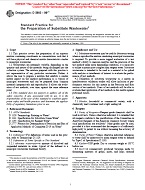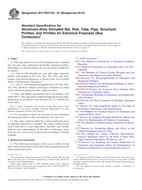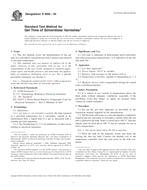1.1 This test method outlines procedures for determining the water (moisture) content of soil by chemical reaction using calcium carbide as a reagent to react with the available water in the soil producing a gas. A measurement is made of the gas pressure produced when a specified mass of wet or moist soil is placed in a testing device with an appropriate volume of reagent and mixed.
1.2 This test method is not intended as a replacement for Test Method D 2216; but as a supplement when rapid results are required, when testing is done in field locations, or where an oven is not practical for use. Test Method D 2216 is to be used as the test method to compare for accuracy checks and correction.
1.3 This test method is applicable for most soils. Calcium carbide, used as a reagent, reacts with water as it is mixed with the soil by shaking and agitating with the aid of steel balls in the apparatus. To produce accurate results, the reagent must react with all the water which is not chemically hydrated with soil minerals or compounds in the soil. Some highly plastic clay soils or other soils not friable enough to break up may not produce representative results because some of the water may be trapped inside soil clods or clumps which cannot come in contact with the reagent. There may be some soils containing certain compounds or chemicals that will react unpredictably with the reagent and give erroneous results. Any such problem will become evident as calibration or check tests with Test Method D 2216 are made. Some soils containing compounds or minerals that dehydrate with heat (such as gypsum) which are to have special temperature control with Test Method D 2216 may not be affected (dehydrated) in this test method.
1.4 This test method is limited to using calcium carbide moisture test equipment made for 20 g, or larger, soil specimens and to testing soil which contains particles no larger than the No. 4 Standard sieve size.
This standard does not purport to address all of the safety concerns, if any, associated with its use. It is the responsibility of the user of this standard to establish appropriate safety and health practices and determine the applicability of regulatory limitations prior to use. For specific hazards statements,
Product Details
- Published:
- 07/01/2004
- Number of Pages:
- 5
- File Size:
- 1 file , 76 KB
- Redline File Size:
- 2 files , 140 KB


